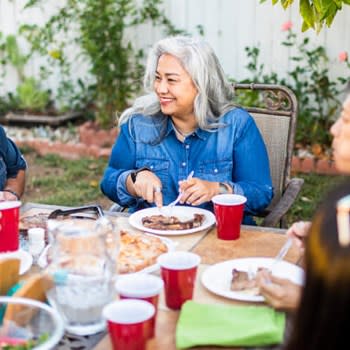More Than 1 in 4 Young Adults Experiencing Regular Anxiety
Our analysis of May 2022 U.S. Census Bureau data reveals a troubling trend: millions of young adults report regular or constant anxiety but aren’t getting the mental health therapy they say they need. Find out what states are facing the highest levels of unmet mental health treatment.

- 29% of Americans ages 18-29 are experiencing regular feelings of anxiety, compared to 19% of adults ages 30 and up.
- In Maine, 55% of adults ages 18-29 have anxiety on a regular basis, and at least 40% of young adults reported regular anxiety in six other states.
- 15% of adults ages 18-29 say they need therapy or counseling but are not getting it, with many states reporting more than one in four young adults not getting necessary mental health treatment.
More than one out of four U.S. adults aged 18-29 experience regular or constant anxiety, and in some states a startling number of young adults report needing counseling or therapy but not getting it.
These are some of the main findings from our recent analysis of May 2022 data from the U.S. Census Bureau Household Pulse Survey, in which we examine young adult anxiety in America.
More than 29% of U.S. adults aged 18-29 say they experienced anxiety more than half or nearly every day of a two-week period during a nationwide survey conducted April 27 to May 9, 2022.
Click on image to enlarge in a new tab
In Maine, 55% of young adults reported regular feelings of anxiety, and six other states reported more than 40% of the 18-29 cohort experiencing the same frequency of anxiety.
In 20 states, one-third of young adults are experiencing anxiety nearly every day or half of the days.
In contrast, 19% of Americans aged 30 and older report the same levels of anxiety.
The number of young adults experiencing regular anxiety is high across the country, and so is the number who are not getting any help for it.
While just 15% of adults 18-29 nationwide report needing counseling or therapy but not receiving it, many states have percentages far greater than the national average.
Click on image to enlarge in a new tab
More than 37% of young adults in Mississippi say they need counseling or therapy but have not received it, while a total of 14 states have at least one-fifth of their 18-29-year-old population saying the same.
In New Mexico, 42% of young adults report consistent anxiety (fifth-highest rate in the U.S.), and nearly 29% report needing counseling or therapy but not getting it (second highest).
New Mexico isn’t alone in sharing a high percentage of young adults in both statistical categories.
- Maryland is home to the fourth-highest share of young adults experiencing anxiety (45%) and the third-highest rate of those needing help but not getting it (28%).
- Wisconsin ranks sixth for anxiety and fourth for unmet help.
- Utah has the 10th-highest rate of anxiety and the sixth-highest rate of young adults not getting the help they need.
What can be made of these findings, and what’s the root of all the anxiety?
We spoke to Dr. Carlos Garcia, licensed psychologist at Tampa Counseling and Wellness for some expert insight.
What Are the Causes of Anxiety?
Dr. Garcia: Much of our anxieties come from feelings of uncertainty and fear of the unknown. If we look at what is happening in our social, political, economic, and overall global climates, it is easy to see why people in the U.S. are experiencing such high levels of anxiety.
There is so much uncertainty being felt in the world today and all people, but especially those of the younger generations, are feeling the unease of a future riddled with uncertainties.
Why Is Anxiety a Bigger Problem for Young Adults Than It Is for Older Generations?
Dr. Garcia: While these numbers are very high, it should also be noted that the stigma around mental health is starting to decrease over the last 5-10 years. As a result, our culture, and especially younger generations, are becoming more knowledgeable about mental health and they are much more likely than ever before to talk about it and seek out help as well.
What Are the Biggest Contributors to Anxiety in Younger People?
Dr. Garcia: One of the biggest sources of anxiety I have seen from young people lately is the overwhelming pressure to be "successful." Our country places such a high value on achievement and from a very early age, kids are sent the message that their value depends on how much they accomplish. This comes in the way of academics, extra curriculars, and eventually professionally.
As a result of being fed this message their whole lives, young people have gotten conditioned to feel a sense of shame around failure. Young people believe there is "something wrong with me" any time they fall short of a goal. They come to believe that their sense of value and purpose is due to external factors and so they are constantly seeking validation outside of themselves. I believe this is part of what has led to a society of people that constantly feel like they are "not enough."
What Can Be Done to Curb High Rates of Anxiety?
Dr. Garcia: I believe it's time we start to normalize failure in our country, especially to younger people. This will help people stop feeling so broken all the time.
The truth is that failure and detours are a big part of most people's lives and we shouldn't feel bad when it does happen. Failure is a wonderful tool to help us learn and grow brave. If we all stopped being so afraid of failing, we could live a life with a lot less pressure and a lot more courage.
Below are some resources available to young adults struggling with anxiety.
Center for Young Women’s Health and Young Men’s Health
These websites, for young women and young men, feature a series of guides on emotional health including anxiety along with online health chats, Q&As and more.
Go Ask Alice!
Go Ask Alice! is supported by a team of health promotion specialists from Columbia University and provides information about mental health, quizzes and resources for those seeking help.
Jed Foundation
Jed Foundation utilizes various tools and resources to promote emotional health and suicide prevention among teens, college students and young adults.
Reach Out
Teens and young adults experiencing anxiety can get tips on how to relax from Reach Out in addition to information on various mental health disorders.
Kelty Mental Health Resource Center
Websites, books, videos, toolkits and support mechanisms are all offered by Kelty in support of anxiety and other mental health disorders faced by young adults.
Strength of Us
Strength of Us is an online community for young adults who are affected by mental health issues, centered around peer support and resource sharing.
Active Minds
Active Minds educates college students about mental health, empowers them to speak openly about it and encourages them to seek help.
National Alliance on Mental Health
The National Alliance on Mental Health publishes information specifically directed at youth including making friends, managing mental health and more.
American Counseling Association
The American Counseling Association has a page dedicated solely to anxiety that includes articles, webinars, books, online courses and other resources.
A high number of young adults are experiencing regular feelings of anxiety and doing so at a higher rate than older adults. Many of those suffering are not getting the counseling or therapy they feel they need.
The data used for this report came from the U.S. Census Bureau Household Pulse Survey, specifically Week 45 (Apr. 27 – May 9, 2022), released May 18, 2022.




